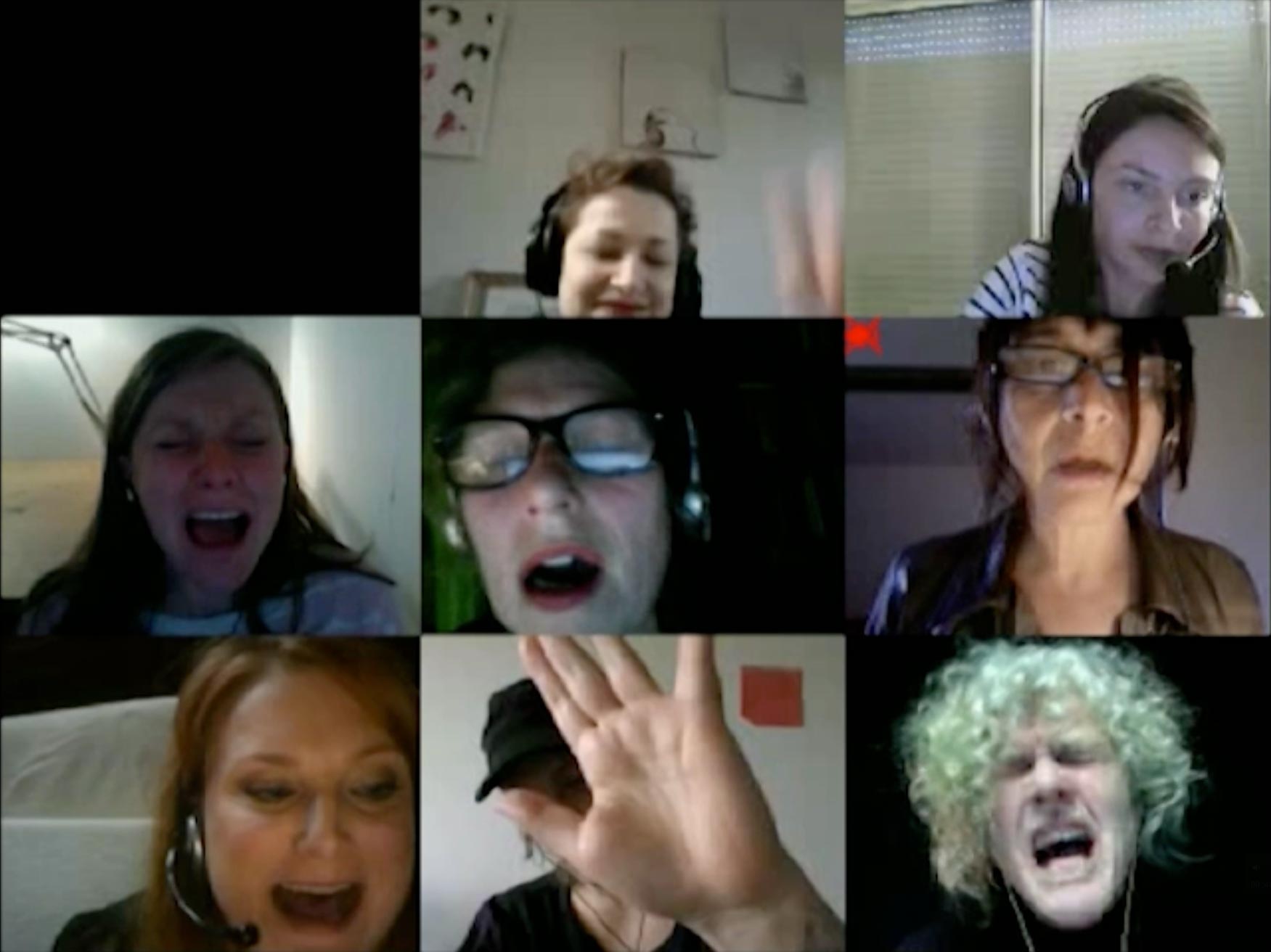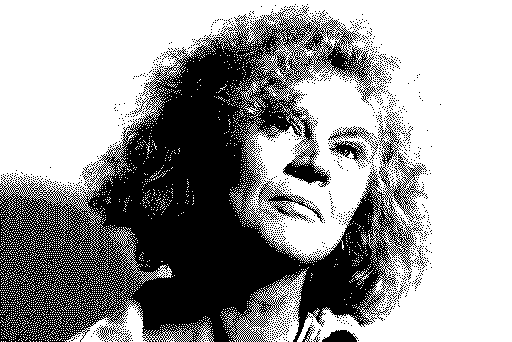Social Networks – Social Broadcasting
Description
Week 9: March 22 – 28
We will explore the concept of social broadcasting, many-to-many interactions that creatively join artists and audiences in live, networked spaces. We will review the work of Annie Abrahams, who is creating a new performance for the upcoming Art of the Networked Practice Online Symposium, to understand how artists today are using the Internet to extend the artistic potentialities of online space for live performance.
Assignments
For next week there is no regular class as students will be attending the Symposium
Art of the Networked Practice Online Symposium
There is no regular class next week. Instead, each student is required to attend the two days of Art of the Networked Practice Online Symposium, which takes place each evening on March 29, 30, 31, uniting Singapore and Chicago/US. Please arrange your schedules. This is an opportunity to experience and participate in an international symposium event that will involve artists and scholars from around the world in the creation of new Internet performance works, keynote lectures, and global roundtable discussions.
Students will attend each of the three events online via Adobe Connect, and will prepare questions for participation. See the Symposium Website for additional details, including scheduling and program.
Schedule @ a Glance:
Day 1: March 29 – ADM (8pm-11pm)
Keynote by Maria Chatzichristodoulou
Internet Performance by Annie Abrahams and collaborators
Day 2: March 30 – LASALLE College of the Arts (8pm-11pm)
Keynote by Matt Adams, co-founder of Blast Theory
Day 3: March 31 – School of the Art Institute of Chicago (11pm-2am)
Internet Performance by Jon Cates and collaborators
Be sure you login to the correct room, the same one we are using for Annie Abrahams’ lecture/workshop today:
To Login: https://connect.ntu.edu.sg/thirdspacenetwork/
Select “Guest,” type your name, “Enter Room”
Due in two weeks: April 5
Symposium Hyperessay
Art of the Networked Practice Online Symposium – Each student will write a 1000 word Hyperessay based on your attendance of two days of the Symposium See the Symposium Hyperessay description for additional assignment details. We will have a group discussion when we return on April 5th.
Outline
Art of the Networked Practice Online Symposium
There is no regular class next week. Instead, each student is required to attend two days of the three-day Art of the Networked Practice Online Symposium, which takes place each evening on March 29, 30, 31, uniting Singapore and Chicago/US. Students will attend online via Adobe Connect Webconferencing. This is an opportunity to experience and participate in an international symposium event that will involve artists and scholars from around the world in the creation of new Internet performance works, keynote lectures, and global roundtable discussions. Each student will prepare questions for participation. See the Symposium Website for additional details, including scheduling and program.
Schedule @ a Glance:
Day 1: March 29 – ADM (8pm-11pm)
Keynote by Maria Chatzichristodoulou
Internet Performance by Annie Abrahams and collaborators
Day 2: March 30 – LASALLE College of the Arts (8pm-11pm)
Keynote by Matt Adams, co-founder of Blast Theory
Day 3: March 31 – School of the Art Institute of Chicago (11pm-2am)
Internet Performance by Jon Cates and collaborators
Be sure you login to the correct room, the same one we are using for Annie Abrahams’ lecture/workshop today:
To Login: https://connect.ntu.edu.sg/thirdspacenetwork/
Select “Guest,” type your name, “Enter Room”
Video Selfies
We will review everyone’s video selfies.
Social Broadcasting

Traditional television broadcasting refers to the hierarchical, one-way transmission of media: broadcasting as a monologue. Social broadcasting centers around the shift to many-to-many, participatory forms of expression and transmission: broadcasting as a dialogue. Social broadcasting explores the live video broadcast as a social, collaborative exchange, in which individual broadcasts are aggregated in an interplay of collective improvisation, composition, and narrative. We refer to this collaborative, many-to-many broadcast paradigm as social broadcasting, as opposed to the one-way paradigm of traditional broadcasting. Social broadcasting aggregates the networked transmissions of multiple broadcasters into a DIWO (Do it With Others) exchange of ideas, expressions, performance, and actions.
Media historian and activist Gene Youngblood signals the need for “a communications revolution… an alternative social world” that decentralizes the experience of the live broadcast through the creative work of collaborative communities. In response to Youngblood’s call-to-action, the Art of the Networked Practice Online Symposium will have as its theme, “Social Broadcasting: An Unfinished Communications Revolution.” Through the presentation of keynotes, live performances, and global roundtable discussions, the Art of the Networked Practice Online Symposium explores the concept of social broadcasting and its histories as a revolutionary shift from one-to-many streaming and performance modalities to distributed peer-to-peer interactions that creatively join artists and audiences in live, networked spaces.
We will see how the idea social broadcasting translates as live performance in new, upcoming works by Annie Abrahams and collaborators in Online En-semble – Entanglement Training, as well as Jon Cates’ new collaborative work igaies (intimate glitches across internet errors). Both of these works will involve performances who are distributed in multiple locations and remote spaces, whose collective transmissions will form a single, unified performance experience broadcast in the third space via Adobe Connect.
Work for Review
Annie Abrahams, Angry Women (2013)

Angry Women by Annie Abrahams focuses on remote communication and collaboration using anger as a pretext. The work centers around the expression of female anger using webcam performance as a facilitator.
Women in front of their webcams, connected via a common interface to the internet, express their anger, their irritation. They will be able to act on their presence in the interface – this way they will try to get as close as possible to their anger.” – Annie Abrahams
More information can be found here on the artist’s Website
From Michael Szpakowski on Angry Women in his article Annie Abrahams – Training for a Better World:
“Angry Women”, created by Abrahams and 22 other women of many nationalities (3 more, in fact, in total, 2 backstage assistants, and a performer who opted for silence throughout) speaking about, acting out, demonstrating, reflecting upon, their anger and its causes and triggers, on webcams with their different individual tongues, with the images being felt to a 3X4 grid, in a format that Abrahams The length of each has been determined by a minute’s silence by all participants signalled the end.
The impact is visceral – we face it feels like a wave of humanity, not so much in numbers, though it is impressive, at least to this man, but in the infinite malleability of face and hand, of gesture and expression and of how these things might be occupy a frame. Sometimes this frame will look like a portrait of Giacometti, with the subject appearing to recede into what seems to be endlessly deep space. At others red lips or an open mouth, sensual and terrifying by turns, occupy the whole of the space – and furthermore each cell is constantly in flux (because these are living, breathing, unpredictable, human beings). There’s something both of portraiture and of the dance at work here, and a kind of founding poetry too (which the moving image work has in common with the collaborative texts at the other end of the exhibition).”
Annie Abrahams, Guest Speaker

Annie Abrahams is creating a new Internet performance work entitled “Online En-semble – Entanglement Training” for the Art of the Networked Practice Online Symposium on March 29th. She will be our guest speaker via Adobe Connect, in which she will talk about her work and give a workshop on her online performance techniques. Students will participate in the workshop on Adobe Connect.
Entanglement Training
Entanglement Training investigates how to be together in a connected world, where machines and humans have to communicate accepting partial overviews, glitches, time-lags, disrupting audience participation and ensuing disorientations. Abrahams considers the intra-active webcam performance situation a good apparatus to train and demonstrate entanglement.
Annie Abrahams’ presentation will be divided into the following parts:
Introduction
How Annie Abrahams met the computer when she was a painter – how she got interested in working online (behaviour, biology) Questions?
4 Experiments in Online Collaboration
We will form 4 groups to conduct 4 experiments in online collaboration, collective performance.
There will be 4 subjects – 5 min to think about the content (write down phrases you could use, invent – you don’t have to talk about yourself!, but still use the “I”), then 4 short performance experiments – 4 trainings with different protocols.
What is the same? A shared responsibility for the performance, sound-wise and visual. When started (I give the sign) you have to do it whatever happens. Think of it as choir where everyone plays a role and is attentive to what the others do. Think of it as a musical improvisation where there are solo’s duets, group moments.
(1) Fear – I am afraid of. 5 performers. Only speaking when they are off webcam. Always one person on webcam, sometimes two – watch straight in front to the webcam, listen, don’t react while on webcam. The others speak about their fears, about fear in general they mostly use “I am …. “ Ends when all have been on screen at least once and some twice, even thrice.
(2) Love …. 4 performers. Phrases on love, songs? 2 performers have their webcam on. They have their finger in front of the webcam and play with that, trying to make nice colors, after a few minutes (not less than 2), they play with both hands in front of the webcam in very closeups, try to make that erotic and are joined by 2 more webcams – the first two webcams quit and become only sound. Never never show anything else than hands. All the time there is sound , phrases and if they don’t know what to say, they repeat the word love, love love. After a minimum of 2 minutes they put a finger in front of the webcam (colored surface). When both are unified surfaces end after 30 sec.
(3) Anger, 4 performers. No webcam. (before starting write one word concerning anger on a paper) Sounds on anger, phrases, words on anger, talking about anger, how it is difficult, or forbidden to show it. When they don’t have anything to say anymore they keep silent for 30 sec and turn their webcam on. The webcam shows one word. (some can continue talking. When all 4 words visible. Keep the image 30 sec and quit the webcam. All is black. End.
(4) Hope! 4 performers. 4 faces on webcam. The four faces say the word “Hope.” They repeat it, use different ways to say it, whisper, yell, sing it, use different rhythms, Always continue continuously the same word. Don’t relax. Try to find new ways, repeat. It end when you are exhausted
Preparing Entanglement Training http://bram.org/en-semble/
Invitations, individual tech test meetings, ask performers to start collecting phrases and think about objects, buy a separate extra webcam, technical test with all, exchanging about connection bandwidth, testing that connection, trying to find solutions, writing test protocol, adapting protocol to bad bandwidth of some, writing individual mails to all, doing a training / a content test with all. Sending an evaluation. Writing the final protocol. Sending the performers the protocol one day before.